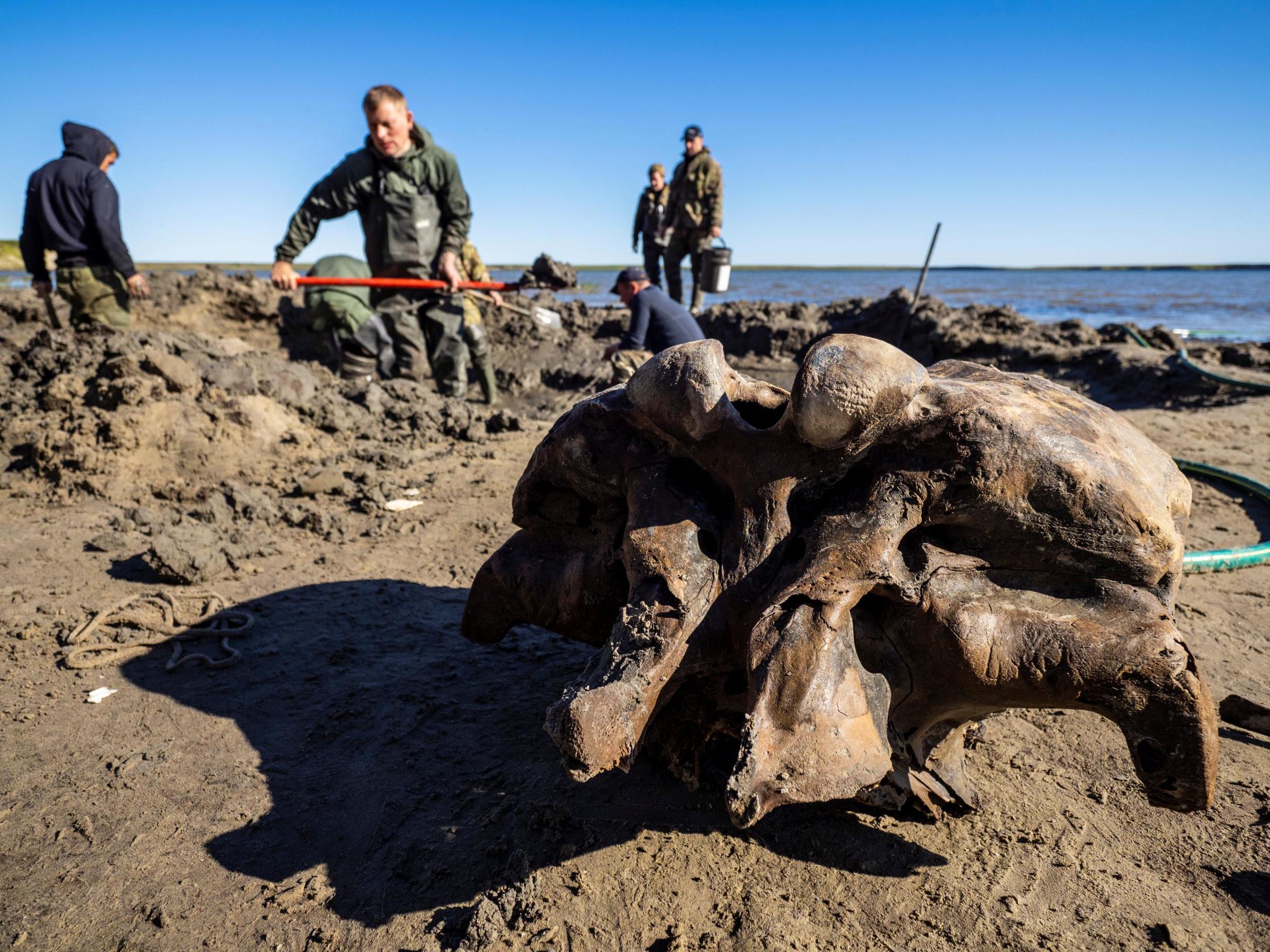Mammoth skeleton thought to be 10,000 years old found in Siberian lake
Animal to be named after family that discovered it

Your support helps us to tell the story
From reproductive rights to climate change to Big Tech, The Independent is on the ground when the story is developing. Whether it's investigating the financials of Elon Musk's pro-Trump PAC or producing our latest documentary, 'The A Word', which shines a light on the American women fighting for reproductive rights, we know how important it is to parse out the facts from the messaging.
At such a critical moment in US history, we need reporters on the ground. Your donation allows us to keep sending journalists to speak to both sides of the story.
The Independent is trusted by Americans across the entire political spectrum. And unlike many other quality news outlets, we choose not to lock Americans out of our reporting and analysis with paywalls. We believe quality journalism should be available to everyone, paid for by those who can afford it.
Your support makes all the difference.Russian scientists are studying the well-preserved remains of a woolly mammoth thought to have lived 10,000 years ago, after it was retrieved from a lake in Siberia last month.
Ninety per cent of the animal's skeleton was uncovered during two expeditions to Pechevalavato Lake, which is situated on the Yamal peninsula above the Arctic Circle.
As well as bones, scientists discovered pieces of skin and soft tissue that had survived in the permafrost, according to local media.
Andrey Gusev, of the Centre of Arctic Research, said the bones were in a "chaotic order", which made the task of extracting them more difficult.
‘We thought that the task would be a lot easier, as based on the primary checks we assumed that the bones were preserved in the anatomical order. But the first and the second days of our expedition showed that it was true only about the back part of the skeleton," he said.
Evgenia Khozyainova, who works at the Shemanovsky Museum in Salekhard, Russia, said that the team found "one front and one hind foot well-preserved, with tendons, soft tissues and pieces of skin".
She added that the expedition also uncovered the mammoth's fossilised faeces, known as coprolite, which will allow scientists to obtain information about the animal's diet and about the ancient plants it ate.
The Siberian Times reported that the adult mammoth is likely to be named Tadibe after the surname of the indigenous family that discovered it.
Similar discoveries in Siberia have become more common in recent years because of the global climate emergency, since rising temperatures have caused permafrost in the region to thaw.
A prehistoric puppy, which is believed to be 18,000 years old, is among the remains to be found in the last few years.
Join our commenting forum
Join thought-provoking conversations, follow other Independent readers and see their replies
Comments